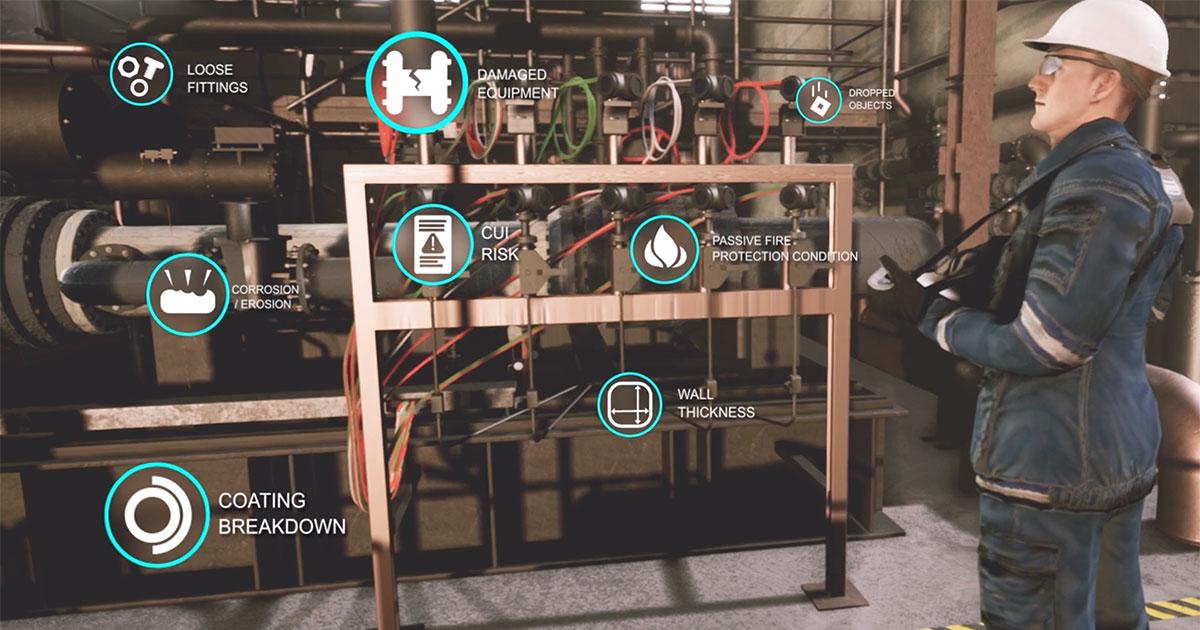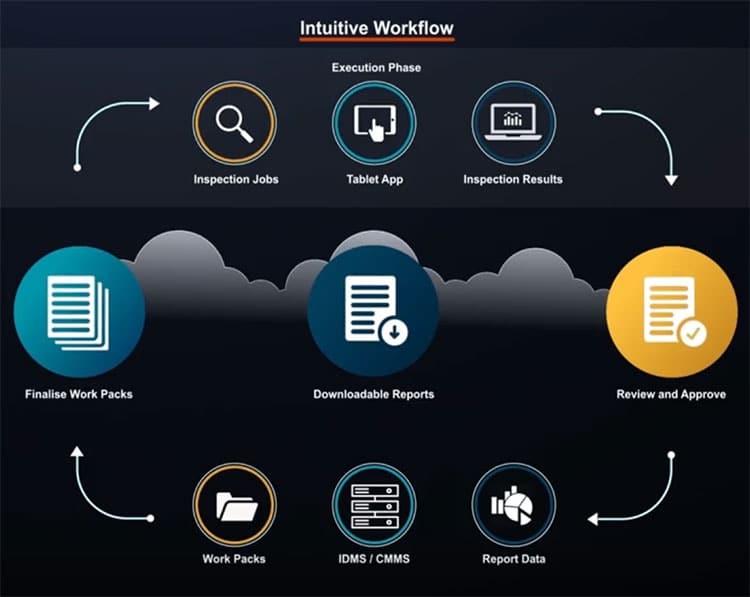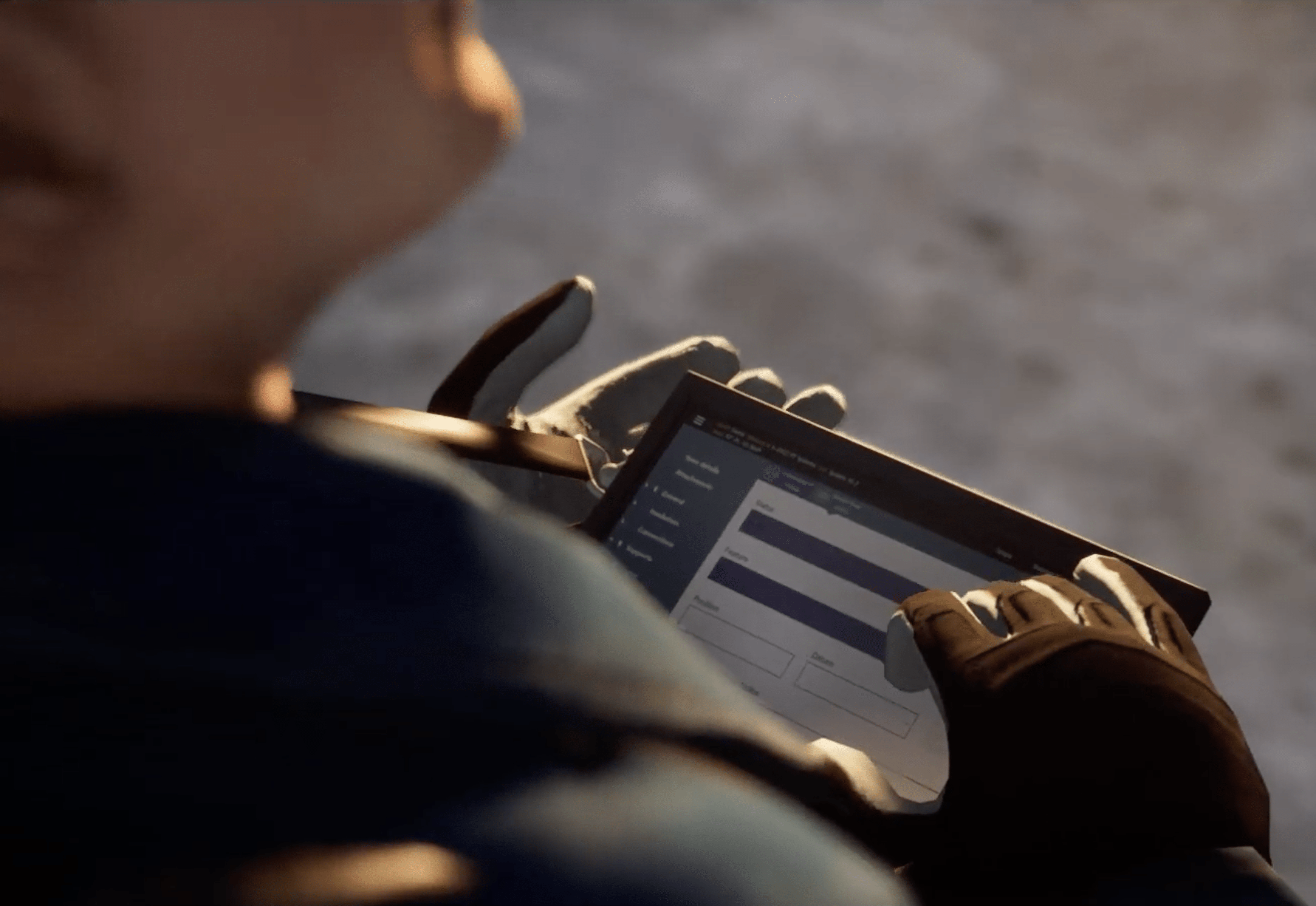Pulling Data—Not Pushing Paper

Digital transformation for inspection management and execution
Among the most significant opportunities that digital technologies present to the oil and gas industry is the improvement in production operations, particularly in relation to reducing unplanned downtime.
Digitalization and improved data capture can positively impact performance in a number of ways. It can help confidently assure the condition of production equipment through streamlined inspection and maintenance programmes and also help assure safety and reduce risk for personnel. Even marginal gains in plant uptime can have a significant impact on the bottom line.
Paper-based processes have propped up the oil and gas industry since its inception but invariably much of the data captured is locked away, experience is not captured and lessons are not shared. The bigger picture is often lost in the detail and the same work is done time and time again.
Until now there has been little standardisation of non-destructive testing (NDT) application. The execution of inspection can vary between individual inspectors, organisations and by region. For example, at Oceaneering we found that in one organisation they had more than 20 different ways of recording ultrasonic inspection (UT).
These factors clearly lead to the potential for poor quality, inefficiencies, misinterpretation and lack of essential data; all crucial when production and safety issues are at stake.
 Digitalization of inspection management and enactment
Digitalization of inspection management and enactment
A typical oil and gas installation will have tens of thousands of inspection data points, generating a flood of information. However, indiscriminate collection of data does not complete the digitalization picture. The process of converting this data into usable information, in order to enhance decisions and performance, is all too often found wanting.
Oil and gas equipment and structures are subject to immense and varied levels of corrosion, abrasion, erosion and impact damage. Inspection frequencies and methods reflect production chemistry and throughput, loading and environmental conditions. Today, the existing manual processes of collecting inspection data do not give us a complete picture of asset condition. As we move to a more digitalised process, improved data-capture quality provides a more holistic view of an asset’s health, enhancing our ability to contextualise information and make informed decisions more quickly and accurately. This ultimately leads to the goal of improved, optimised inspection and maintenance planning.
 Finding efficiencies in asset integrity
Finding efficiencies in asset integrity
In 2018, DNV GL reported that 46 per cent of senior professionals in the oil and gas industry believed there had been under investment in the inspection and maintenance of equipment and infrastructure in recent times. It is anticipated that future investment will focus on digital systems and processes designed to streamline operations that previously relied on a multitude of physical paper reports.
Existing digital inspection solutions often amount to well-presented, but basic, electronic spreadsheets. As more and more processes become digitalised and automated, these tools cannot keep up with operator requirements for a more aggregated and integrated inspection management solution that builds consistency and accuracy for the future.
 Digital tools for asset integrity
Digital tools for asset integrity
One pioneering example is Oceaneering’s new Inform Inspect™ platform, a non-destructive testing (NDT) and inspection management solution designed to help manage the full inspection life cycle.
The capability was created by an in-house team, which initially looked to source a holistic NDT and inspection management paperless solution that would work globally. The team could not find one on the market that covered all the requirements that they knew, as inspectors themselves, were necessary to create a truly flexible, intuitive and integrated solution.
The aim of the group was to provide a solution that established greater rigor and value for asset integrity by delivering measurable improvements in inspection quality and auditability. The process started with the team reviewing existing templates, national and industry legislation and best practice, and identifying a process to develop something smarter and more efficient.
The team categorised the four methods of NDT: visual, ultrasonics, electromagnetics and radiography. These were then split into individual deployment techniques and over the space of six months were built into a system that aligns with regional and operational requirements, while also providing consistency of reporting and methodology by applying a global standard for capturing data.
The result is a configurable process that enables users to customise reports, manage access, add preferences such as the prioritisation of inspection tasks and bespoke picklists, and also offers added rigor with options to approve, amend or reject inspections from the office in real-time, using information provided onsite. Inform Inspect was developed and tested over two years, and has undergone extensive trials to ensure its suitability across different assets and geographies. Current results from Inform Inspect include measurable safety improvements and an increase in productivity of up to 30%.
It can store and edit technical drawings, past inspection reports, site layouts, photographs and schematics, making it easier for the user to identify different groups of equipment, map out and locate areas required for inspection and mark up areas that require further attention or are giving cause for concern.
The system helps inspectors prepare for their shift in advance of being on site, using quality pre-designed work packs that are ready to view on the recommended tablet. The system also contains information that helps accurately pinpoint inspection locations in order to process the inspections quicker. This, in turn, reduces time on site, providing a particular advantage to inspectors working in high risk or remote areas. Additionally, it can be integrated with customers’ data management systems, enabling information to be inputted directly from site, then accessed and shared in real-time.
It is expected that future developments in this system will further reduce the amount of time spent in the field collecting data and furthermore reduce the turnaround from work pack to report.
Digital asset integrity systems such as Inform Inspect are changing the way in which integrity issues are identified and actioned. The system provides an enhanced level of accuracy by providing usable data from site to the office almost immediately. Issues are picked up and addressed far more quickly via the use of wireless technologies. A far cry from illegible, rain damaged paper reports that can take weeks to get back to the beach and even longer before any remedial action is implemented.
The future of asset integrity
Digital transformation is paving the way for a new era of asset integrity. Advanced technologies such as data analytics, machine learning, robotic inspection and vision systems have matured and can now be embedded into every aspect of asset integrity management to improve the quality and richness of information, and to reduce processing times. Accelerating the delivery of data to decision makers helps to identify value more quickly, as well as what is underperforming or what is deemed a significant integrity threat. All this is vital to ensure the safe ongoing operational and commercial viability of assets, particularly those in late life, where tight control of OPEX is paramount.
There is no doubt that smarter, faster, digital applications can and will have a significant impact on predictive maintenance in the oil and gas industry. The trick is to ensure you use applications that do more than just simply collect data, and move to those which provide practical insight, better control and deliver true value to the inspection management process.
By Alasdair Smith, Strategic Projects Manager, Oceaneering

